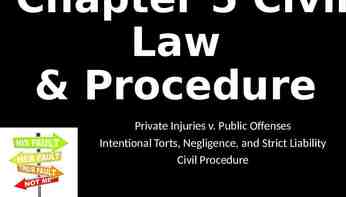Minimizing Disruption in Juvenile Education Joycetine Boone,
15 Slides76.59 KB

Minimizing Disruption in Juvenile Education Joycetine Boone, Virginia Department of Corrections Natalie Brannon, Department of Human Resource Management Betty Burrell, Albemarle County Hilton McDaniel, Department of Behavioral Health and Developmental Services Scott Naff, Department of Game and Inland Fisheries

Introduction What are the best practices for low-cost, evidence-based programs, policies, and practices that will ensure students receive an education when they are court-involved?

Executive Summary VA Code 22.1-209.1:2 relegates accountability for courtinvolved juveniles to local school districts. 21,000 Virginia school-age students were referred to law enforcement agencies. A disproportionate number were court-involved disabled and minority students. A state-wide, multi-disciplinary approach is necessary. Supports key initiatives for mental health care and Virginia Plan for Well Being.

Current State When a juvenile is charged for a crime in Virginia, a number of school divisions have policies that prohibit the accused from returning to school until their case is heard. Even if a student is innocent, they are required to be out of school. Often, students who commit less serious crimes are permitted to attend alternative schools. However, serious offences such as felonies require students to be educated at home for at least ten hours per week. There are 28 regional and local alternative schools; most with different eligibility requirements and curriculum. Many districts do not have the financial resources to send teachers to the home or have an accountability system/program to ensure these students are being educated (as is legally required).

Current State When a juvenile is charged for a crime in Virginia, a number of school divisions have policies that prohibit the accused from returning to school until their case is heard. Even if a student is innocent, they are required to be out of school. Often, students who commit less serious crimes are permitted to attend alternative schools. However, serious offences such as felonies require students to be educated at home for at least ten hours per week. Many districts do not have the financial resources to send teachers to the home or have an accountability system/program to ensure these students are being educated (as is legally required).

Current State (cont.) In the 2011-2012 school year, Virginia had approximately 16 referrals to law enforcement agencies for every 1000 students.* Youth with disabilities are at higher risk Special Education students and those with emotional or behavioral disorders or learning disabilities are arrested and incarcerated at a higher rate than their non disabled peers. Research indicates that removals from school place students at higher risk for school failure.

Recommended Approach State-wide uniformity for addressing educational opportunities for court-involved juveniles Brick and mortar learning facilities Consistent protocol across school divisions for designation to alternative education program Comprehensive resources for intervention Student Assistance Program Initiated upon move to alternative school Modeled after State EAP Addresses behavior causality Provides outlet for student Prompt return to traditional school upon court resolution

Recommended Approach (cont.) Pros Cons Consistent educational experience across school divisions Loss of flexibility for individual school divisions On site facility for improved teacher/student interaction Transportation to and from the facility

Alternative Approach: Continue Existing Homebound Programs Pros Familiarity with local school process Cons Increased demand for staff Difficulty monitoring Isolates students

Alternative Approach: Virtual Learning Pros No classroom requirement Flexibility Reduced personnel requirement Cons Students may lack motivation. Lack of internet access or computer availability Inconsistency between localities Monitoring resources Requires consistent curriculum development

Next Steps Introduce legislation to outline state-wide criteria for educational opportunities for court-involved juveniles. Multi-disciplinary team comprised of representatives from the following state agencies: Virginia Department of Education Supreme Court of VA Department of Juvenile Justice Department of Behavioral Health and Developmental Services Department of Social Services Consider state assistance for transportation to these schools State-level assessment of the effectiveness of alternative educational programs

Questions?

Appendix

Educational Services in Juvenile Corrections Learning Disabilities, including ADHD 35% Developmental Disabilities 13% Special Education 32% Emotional and behavioral disabilities 20%

References http:// www.doe.virginia.gov/instruction/alternative ed/programs.sh tml http://law.lis.virginia.gov/vacode/title22.1/chapter13/section2 2.1-209.1:2/ http://criminal-law.freeadvice.com/criminal-law/juvenile law/ juvenile-law.htm http://www.npsk12.com/net https://open.bu.edu/bitstream/handle/2144/19475/ Nguyen bu 0017N 12354.pdf?sequence 1&isAllowed y http://www.npsk12.com/net






